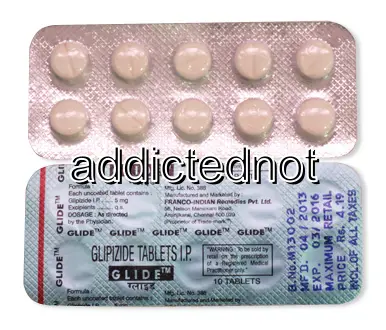| Package | Dosage | Price | Price per Dose | |
|---|---|---|---|---|
| Dosage: 5mg | ||||
| 360 pill | 5mg | $201.21 | $0.56 | |
| 240 pill | 5mg | $145.41 | $0.61 | |
| 180 pill | 5mg | $113.28 | $0.63 | |
| 120 pill | 5mg | $81.15 | $0.68 | |
| 90 pill | 5mg | $65.93 | $0.73 | |
| 60 pill | 5mg | $45.64 | $0.76 | |
| 30 pill | 5mg | $23.66 | $0.79 | |
| Dosage: 10mg | ||||
| 360 pill | 10mg | $297.60 | $0.83 | |
| 240 pill | 10mg | $219.81 | $0.91 | |
| 180 pill | 10mg | $179.23 | $1.00 | |
| 120 pill | 10mg | $135.26 | $1.13 | |
| 90 pill | 10mg | $114.97 | $1.27 | |
| 60 pill | 10mg | $79.46 | $1.34 | |
| 30 pill | 10mg | $43.95 | $1.44 | |

Glipizide Description
Introduction to Glipizide
Glipizide is a well-known medication used primarily in the management of type 2 diabetes mellitus. It belongs to the class of drugs called sulfonylureas, which work by stimulating the pancreas to produce more insulin. This increase in insulin levels helps to lower blood sugar levels effectively. Many patients with type 2 diabetes find Glipizide to be a helpful addition to their treatment plan, especially when lifestyle modifications alone are insufficient to control blood glucose. Its widespread use and decades of clinical experience make it a drug of choice for many healthcare providers worldwide.
How Glipizide Works
Glipizide functions by binding to specific receptors on the pancreatic beta cells. This binding triggers a cascade of events that result in the release of insulin. Unlike insulin injections, Glipizide helps the body to produce insulin naturally, which can be advantageous for maintaining more stable blood glucose levels. Its mechanism of action allows for improved glucose uptake by muscle and fat tissues, thereby reducing hyperglycemia. Due to these properties, Glipizide is often used once or twice daily, with doses tailored to the patient's needs and response to therapy.
Effectiveness and Benefits
Many users report that Glipizide provides noticeable improvements in blood sugar levels within a few days of starting treatment. Its quick onset of action and predictable response make it a popular choice among oral hypoglycemic agents. Patients often appreciate that it can be used in combination with other antidiabetic medications or insulin to achieve better control. Over time, consistent use of Glipizide can help reduce the risk of diabetes-related complications, such as nerve damage, eye problems, and kidney issues. Additionally, some patients find that the medication helps them better manage their dietary and lifestyle adjustments when combined with proper medical guidance.
Possible Side Effects and Precautions
Like all medications, Glipizide can cause side effects. The most common include hypoglycemia, which manifests as dizziness, sweating, hunger, and confusion. It is essential for users to monitor their blood sugar levels regularly and be aware of the symptoms of low blood glucose. Some individuals may experience gastrointestinal issues such as nausea or abdominal discomfort. Rare adverse effects include allergic reactions or skin rashes. It is crucial to inform the healthcare provider about any pre-existing conditions, especially liver or kidney problems, before starting Glipizide. Pregnant or breastfeeding women should also consult their doctor to assess the safety of this medication during their condition.
Storage and Usage Guidelines
To ensure the medication's effectiveness, Glipizide should be stored in a cool, dry place away from direct sunlight. It is usually taken orally, with or without food, depending on the prescribed dosage. Patients should adhere strictly to their healthcare provider’s instructions regarding dosage and timing. It is also important not to adjust the dose without medical guidance. Regular follow-up appointments are recommended to monitor blood sugar levels and assess the medication’s ongoing effectiveness. Patients should keep a record of their blood glucose readings and report any unusual symptoms or side effects to their physician promptly.
Conclusion
Glipizide remains a reliable and effective option for managing type 2 diabetes. Its ability to stimulate insulin production provides significant benefits for many patients. When used correctly under medical supervision, it can help maintain better glycemic control and minimize the risk of complications. As with any medication, understanding its use, potential side effects, and proper storage is key to maximizing benefits and ensuring safety. Patients are encouraged to collaborate closely with their healthcare providers to tailor therapy to their individual needs and health status.
See Also

